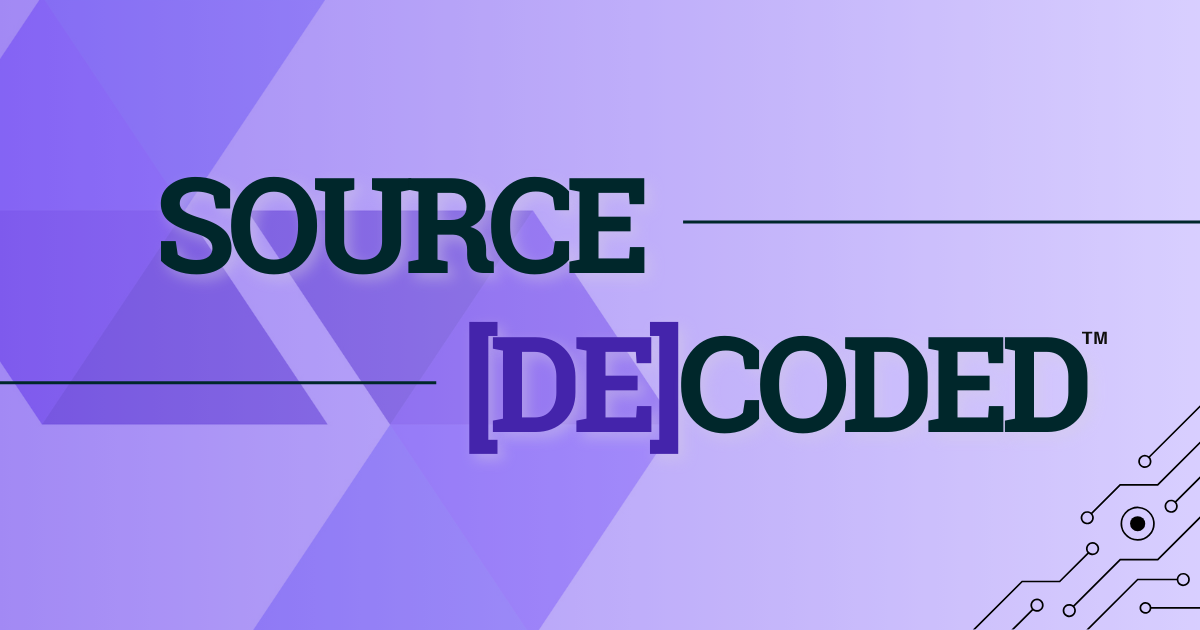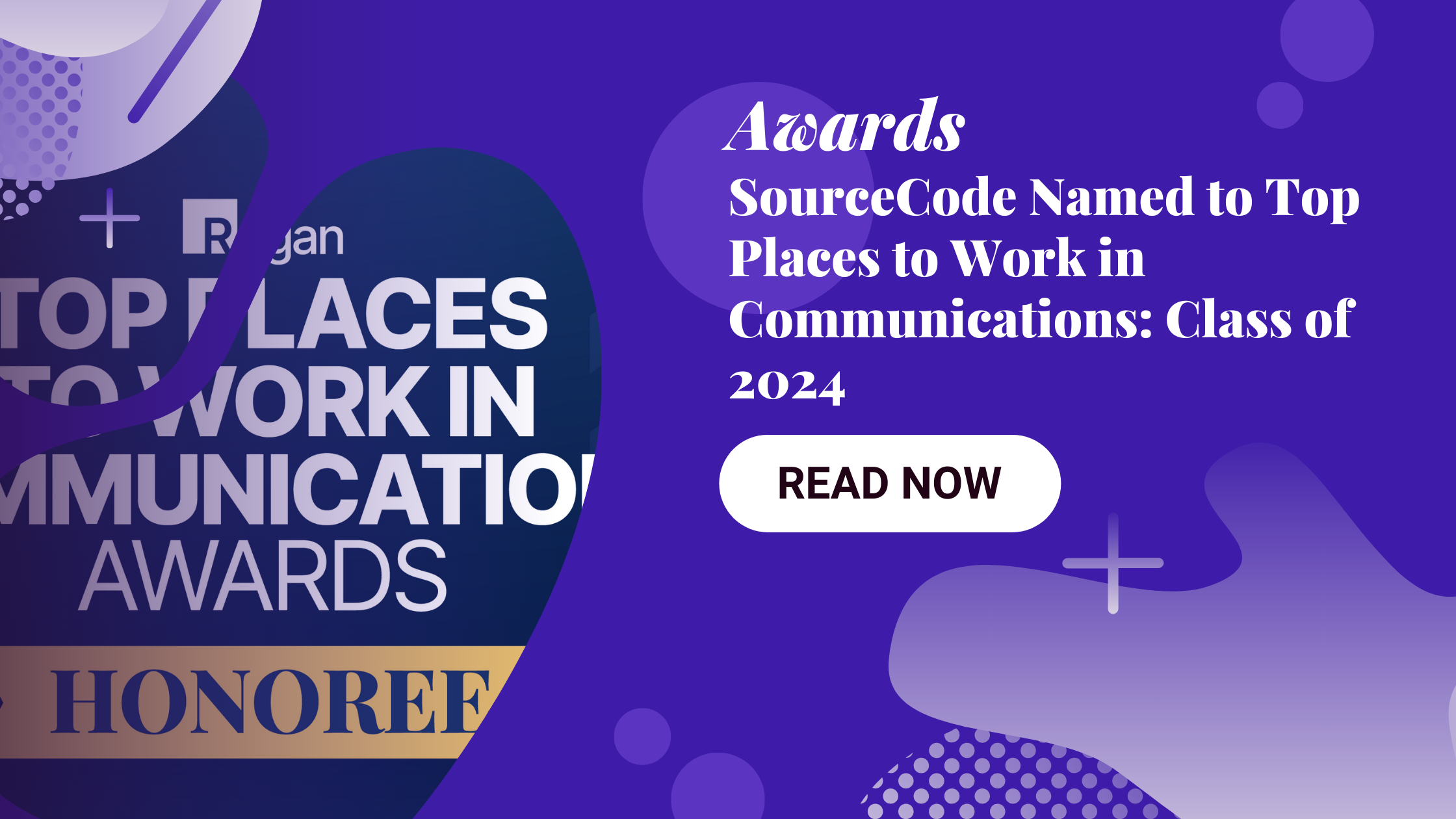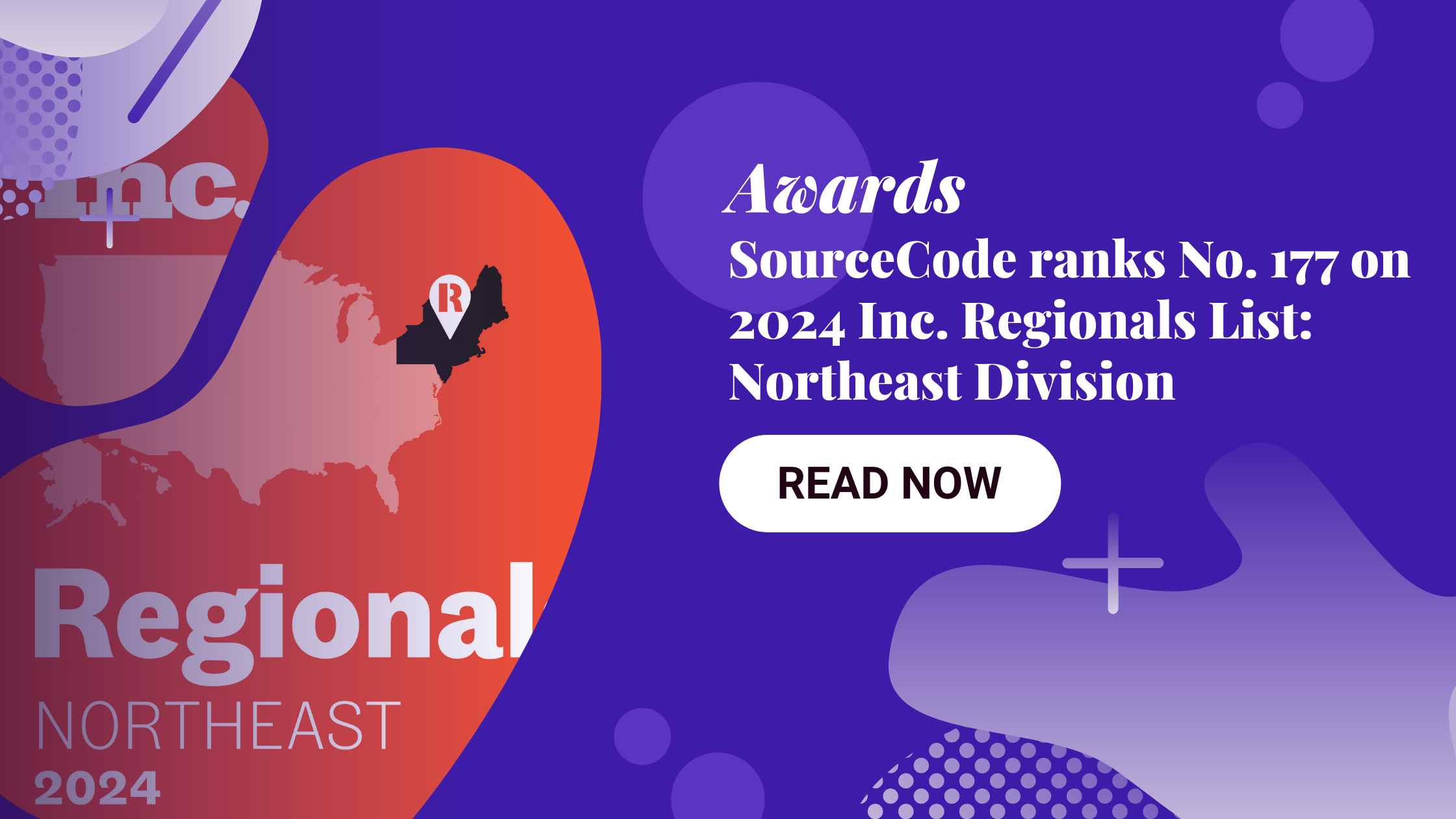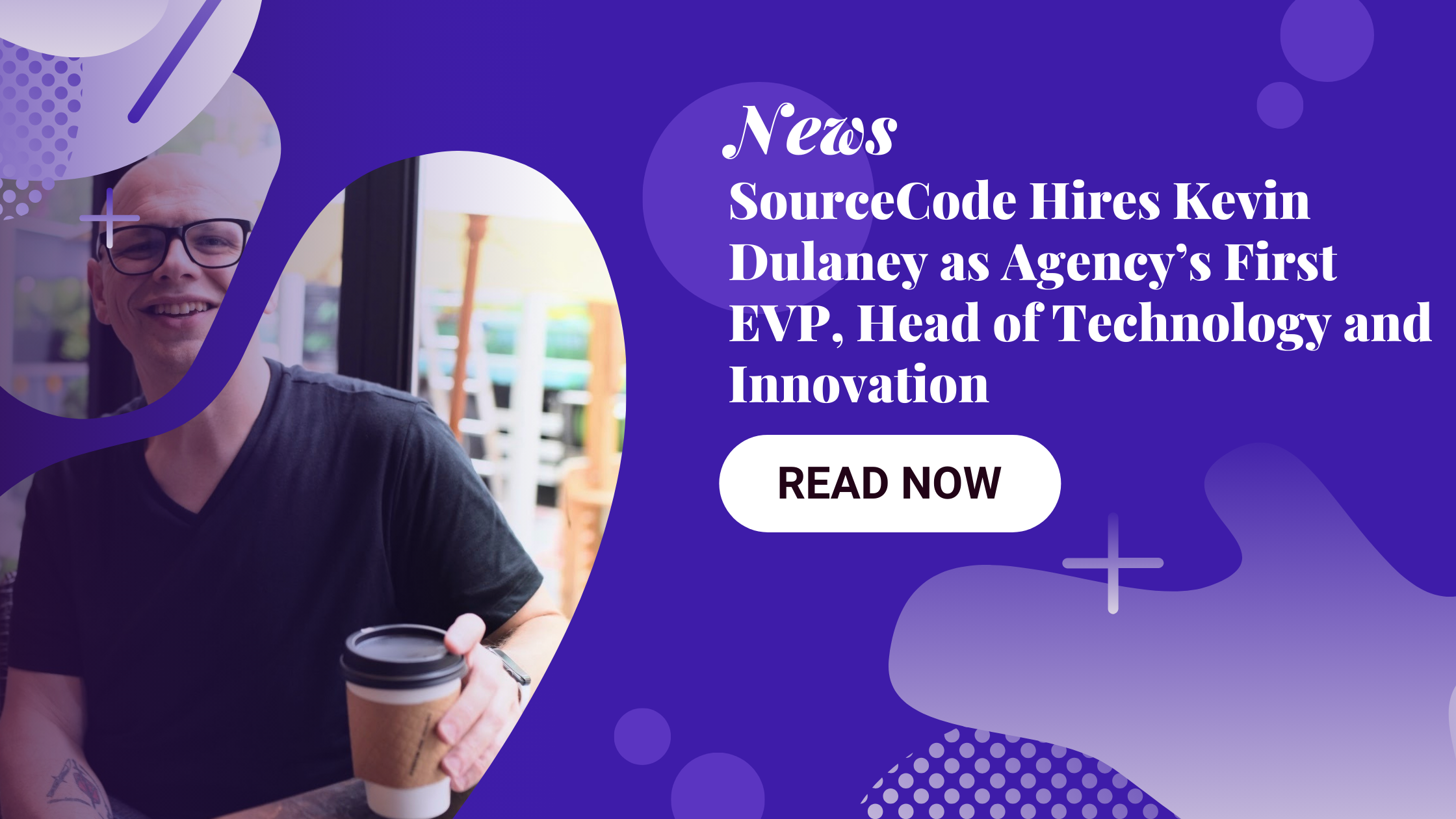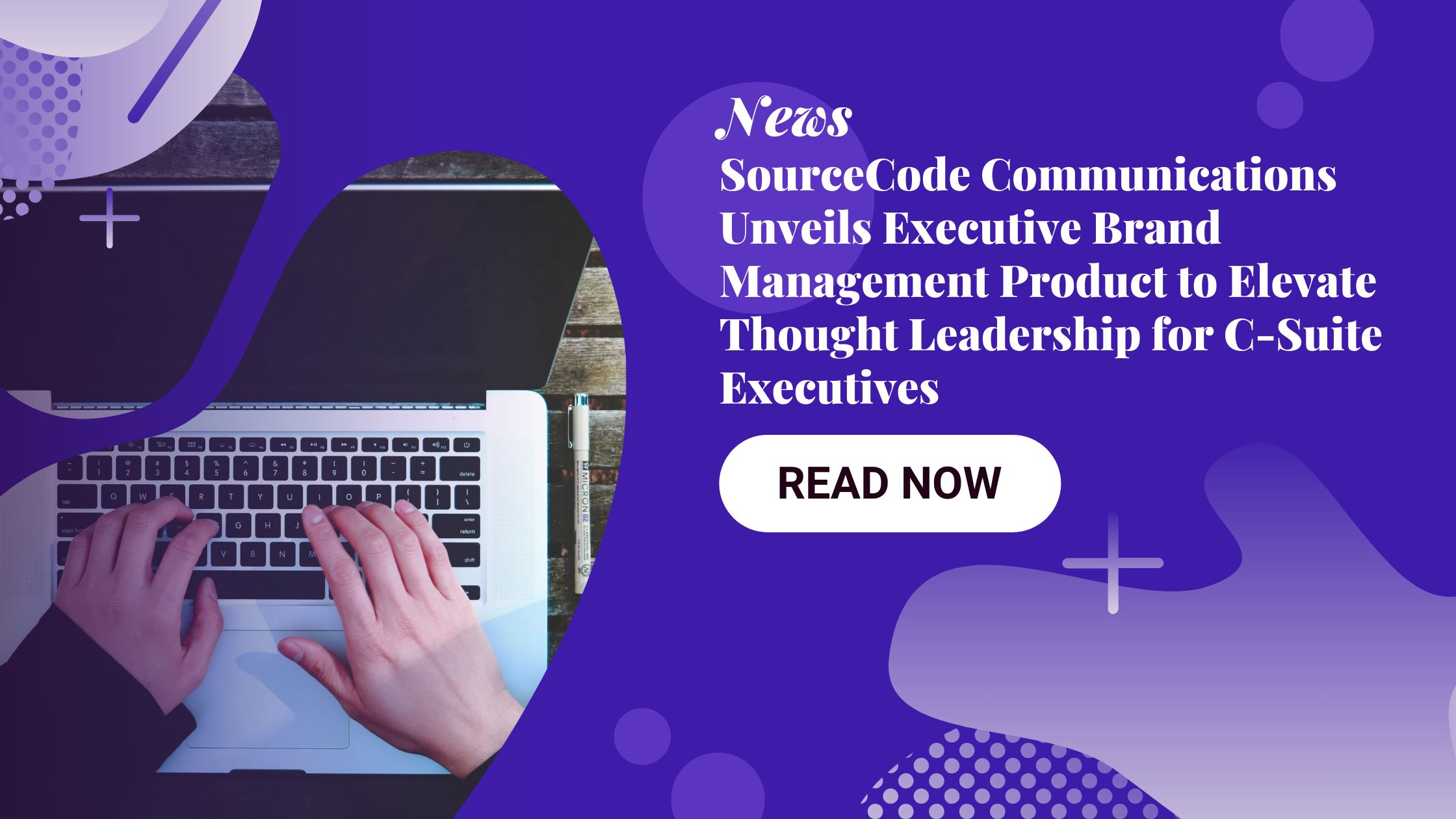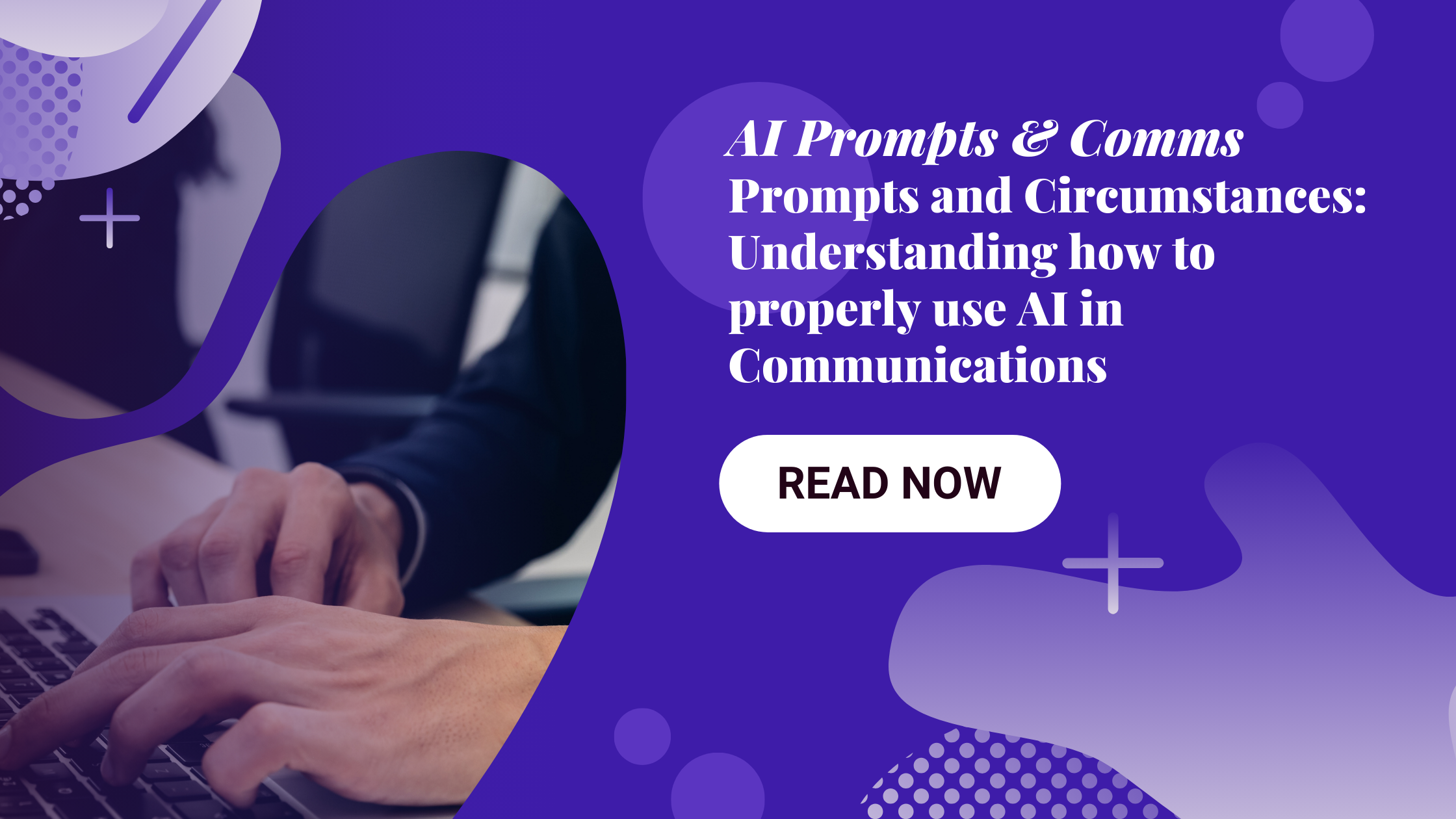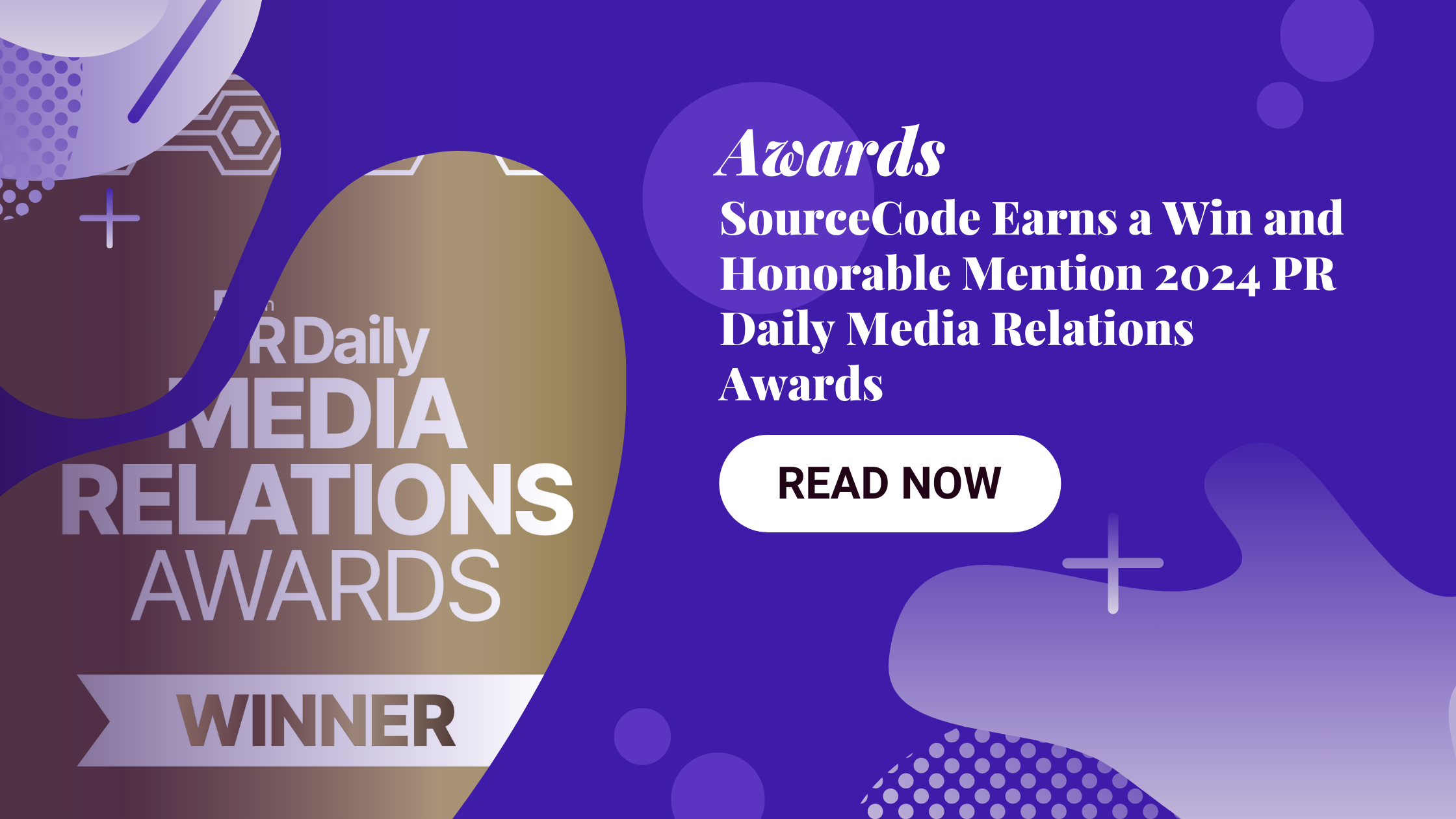Source[De]Coded: ✏️ Rewrite Old-School Marketing Tactics
Hey all!
Greg spent a few days down at the University of Florida engaging with students and helping faculty update their curriculum. Despite all the news around the defunding of diversity programs in Florida, the future is bright. Faculty remains steadfast in their goals to make sure all voices are heard and these kids are whip-smart. It’s clear, they may have lost a battle, but everyone is focused on winning, and we’re in it with them 🤜🏼
This week’s newsletter takes a look at a new key lead gen metric all organizations should keep an eye on, how to have more fun with your consumers, and why you should be optimizing your marketing for mobile (especially as a B2B organization).
Until next time!
Prioritize brand building: Why brand affinity is a vital lead gen metric to track
TL;DR: Lead gen measurement and attribution have always been the gold standard in measuring B2B marketing success… but perhaps there’s another metric to keep in mind. The underlying goal of demand generation is to foster more leads and turn them into customers. In addition to generating more leads, we should also consider fostering more qualified, warm leads. This is where brand affinity and brand interest can help swing the demand generation curve into a more elevated, strategic focus.
Takeaway: Proving ROI can be a complex art of analyzing lead gen metrics. Site traffic and ad engagement can help you understand how your content is performing and whether there’s interest in your messaging. But at the end of the day, lead generation should be focused on bringing people together who are interested in your solution, your niche, or the pain point your brand solves. Lead gen metrics can help signify the level of intent of a potential buyer, and we’re seeing that strong brand recall and preference are often at the top level of intent. How can you invest in brand building? Create robust content engines, pivot your ads with a focus on brand recall and recognition, or prioritize audience engagement. It’s just like the old saying goes: if you build it, they will come.
Consider:
- What are your current success metrics for analyzing ROI? Are there other indicators of success you may not be considering?
- Could your company benefit from a more brand awareness-focused campaign?
Get creative with customers: Olipop’s latest campaign employs fans to create brand content
TL;DR: DTC better-for-you soda brand Olipop is looking to hire two best friends to join the company as “senior soda consultants” and send them on an all-expenses-paid trip across the U.S. to create content for the brand. The campaign showcases Olipop’s commitment to influencer marketing and showcases how creators still hold relevance in marketing plans.
Takeaway: Olipop’s campaign comes at a time when research shows creator-led ads have a 1.4x greater impact on building brand loyalty and a 1.3x greater impact on inspiring brand advocacy. The data shows that influencer marketing still has value. So much so that 44% of marketers this year plan to increase their investment in content creators. Looking beyond the potential metrics for success, a campaign like this is a fun and creative way to engage your customer, and make them feel appreciated and included in your brand’s trajectory, while providing a new avenue for engagement. Olipop is betting on their biggest fans and letting them in on the brand process – a win for all parties involved.
Consider:
- How could you have more fun with your consumers?
- Could your brand benefit from influencer marketing? Influencers and creators are everywhere within every niche, serving almost every product focus.
Optimize for mobile: Mobile marketing isn’t just for B2C orgs anymore
TL;DR: 85% of Americans own a smartphone, and 15% of American adults rely on their mobile phones as their sole internet outlet, so don’t assume that your audience is only reaching your brand through your desktop website. While the use case for consumer brands has long been an obvious one, there’s a lot of value for B2B brands to also integrate mobile marketing into their campaigns, including in mobile-optimized websites, SMS or text message marketing, and mobile-friendly email marketing and advertising.
Takeaway: There are many opportunities for B2B brands to integrate mobile marketing, from small edits to device-targeted and segmented campaigns. The no-brainer move is to ensure all of your content is optimized for mobile – this includes making sure your website, landing pages, and emails are optimized for smaller screens, simplified navigation, and fast loading times. Another key area may be examining your mobile metrics to understand how much of your traffic is already coming from mobile. This can help you figure out which mobile tactics to employ and set a baseline for success. The future of marketing is increasingly mobile, so the earlier you can identify opportunities for your brand, the better.
Consider:
- Is your brand content and digital presence optimized for mobile devices? If not, where can you improve?
- How does your digital audience spend time on mobile? Think about the social networks they scroll, the emails they get in their inbox, and how they communicate with colleagues through calls or SMS. Understanding their actions can help you understand where your brand should show up.
SourceCode Communications Named to Ragan's Top Places to Work in Communications: Class of 2024
SourceCode has once again been named one of Ragan's Top Places to Work in Communications in the Class of 2024. Ragan’s Top Places to Work in Communications celebrates the organizations that exemplify excellence in workplace culture, communication strategies, and employee engagement within the dynamic field of communications.
Being recognized by the industry as an agency that not only executes high-quality work, but also prioritizes the success and wellbeing of our team is something we’re incredibly proud of. This award underscores the importance that SourceCode has always placed on building a workplace culture that empowers our employees to thrive, and our thoughtful program around employee wellness and benefits illustrates why we were chosen to be included in this list.
From our annual wellness stipend, to our robust learning and development programs, to the variety of culture-related events big and small, ensuring a positive, fulfilling workplace for our employees is a cornerstone of our business.
SourceCode will be honored with the other organizations making this year’s list during the Top Places to Work in Communications Awards Luncheon, which will take place April 18 at the Fairmont Hotel in Chicago. This event will bring together industry leaders to acknowledge and celebrate the accomplishments of the organizations on this year’s list, while offering valuable insights into what makes organizations top places to work for communicators.
SourceCode Ranked 177 on 2024 Inc. Regionals: Northeast Division
We’re pleased to announce that SourceCode has been listed on this year’s Inc. Regionals list for the Northeast division. Coming in at No. 177, this marks SourceCode’s second consecutive year being included on the Inc. Regionals list, which celebrates the innovative achievements of companies driving sustainable growth and creating jobs.
Companies recognized in the 2024 Inc. Regionals are ranked according to percentage revenue growth from 2020 to 2022. The 2024 Inc. Regionals had a total of 198 companies that made the cut for the Northeast division, which collectively saw 156% of median growth and added a total of 14,514 jobs to the economy. SourceCode grew by 69% during this two-year timeframe and this accomplishment wouldn’t be possible without the hard work of our team and the support of our clients.
We look forward to another year of doing award-winning work with our incredible team and clients.
Source[De]Coded: 🔮 Embrace The Future of B2B Marketing
Hey all!
Big news coming out of SourceCode in the last week. We hired Kevin Dulaney as our EVP, Head of Technology and Innovation. He’s working to optimize the business, making sure we’re leveraging automation and AI where possible, and building out some exciting new marcomm products (stay tuned on this front).
Equally as important (arguably), we gave our NYC office a bit of a facelift, and as a part of that we are the proud new owners of a neon sign (ok, LED…but still).
 This week’s newsletter has us diving into B2B marketing and the shift to targeting the people that make up the organizations, not the organizations themselves (wink wink, nod nod…ahem…Storyhub) as well as the impact AI is having on the advertising business.
This week’s newsletter has us diving into B2B marketing and the shift to targeting the people that make up the organizations, not the organizations themselves (wink wink, nod nod…ahem…Storyhub) as well as the impact AI is having on the advertising business.
Enjoy and see ya next time!
Greg & Becky
The consumerization of B2B marketing: B2B purchasing is shifting towards the individual consumer rather than the organization
TL;DR: The old-school approach to B2B marketing often includes sales calls, in-person events, and corporate sponsorships. But as digital marketing has ramped up in recent years, companies are relying more and more on online research, social media, review sites, and peer communities. This new school of thought targets B2B buyers personally – through their inboxes, social feeds, and internet ads – allowing multiple touch points to help close the organizational deal.
Takeaway: We’ve probably all been at the receiving end of this shift. You scroll on social media only to see ads for a corporate industry solution alongside ads for the new restaurant you’ve been wanting to try out. For better or for worse, our work and lives blend into our online identities. From a corporate perspective, this is great news if you’re trying to close a deal with a new buyer, but the variety of ads on a user’s newsfeed is important to consider. Your brand is not just competing for attention amongst your industry competitors anymore. Think of all the adjacent brands consumers are seeing alongside your brand – the clothing brands, the travel destinations, the lifestyle purchases, the entertainment options. When you think of how your B2B brand matches up to a buyer’s overall purchasing decisions, you’re telling the buyer that your brand belongs in their solutions lineup.
Consider:
- What other brands might your buyer be seeing across their digital channels? Think outside your industry or product offering.
- How can you personalize your marketing to speak to the individual buyer (not just the corporation they work for)?
AI is paying off for advertisers: Meta’s investing aggressively in AI solutions to increase efficiency
TL;DR: Generative AI has already fueled a 24% year-over-year increase in Meta’s ad business in Q4 for a total of $38.7 billion. This news comes after Meta’s “year of efficiency” and a deeper push to integrate AI across business solutions. The growth can be attributed mostly to Meta’s Advantage tools, including the Advantage+ Shopping solution that automates campaign creation using AI. Companies using the tool saw positive results including a 41% increase in return on ad spend.
Takeaway: You should absolutely be using AI to drive efficiency wherever possible, and ad buys are a perfect place to start. Brands using Meta’s Advantage tools noted that Advantage+ allowed them to “really just focus on creative… focus on overall strategy and concepting, but not necessarily spending too much time in the platform media buying.” Media buying is highly algorithmic, which makes it perfect for AI to perform. Brands are better off spending human resources on tasks AI is less good at, like crafting creative assets or plotting campaign strategies.
Consider:
- How can AI make your advertising more efficient?
- What is the best use of your human energy and time?
Gen Z & Millennial content preferences: How to reach the future B2B buyers and decision-makers
TL;DR: A few new studies recently dropped on Gen Z and young millennial content and brand interests. According to YPulse, 69% of 13 to 39-year-olds say they’re more likely to purchase brands that are considered “cool” – for 25 to 39-year-olds that includes brands like Nike, Savage x Fenty, and YouTube. Simultaneously, the Pew Research Center found that YouTube and Facebook were the top visited social media sites in 2023 (with 93% of Americans ages 18-29 using YouTube).
Takeaway: This is all interesting to note because, to add one more study to the mix, a July 2023 survey from Content Marketing Institute and MarketingProfs found that 57% of B2B content marketers worldwide face challenges creating the right content for their audience. It’s hard to make content when you don’t know where your audience is and what’s resonating with them. A problem that will only be exacerbated by changing buyer demographics and interests. To keep up with the future of B2B buyers and decision-makers, it’s important to study the brands that are resonating with them. Similarly, set yourself up for success by being present on the right digital platforms. When you’re creating with this future buyer in mind, you might find it becomes easier to create the right content consistently.
Consider:
- What are Nike and YouTube doing that makes them “cool” with these younger audiences?
- How can you show up on the top content platforms for your audience? Can you create visual content that resonates across popular sites like YouTube and Facebook?
Source[De]Coded: 🏈 Lessons From Super Bowl LVIII Ads
Hey all! Were any of you Niners fans ‘sick’ yesterday with a broken heart? 😅 So…we couldn’t help ourselves and had to jump on the Super Bowl insights bandwagon. We did some quick thinking on the use of QR codes and how effective they might be, customized product launches, and the interesting approach Pfizer took with advertising to a B2B audience on a B2C medium. Check it out and let us know what you think!
Side note - did you see what we did?
Conversion or Distraction?: Super Bowl advertisers used QR codes to get consumers to take action
TL;DR: The Super Bowl commercials tried really hard this year to get viewers to convert. Many of them – including TurboTax and NYX – included QR codes to scan. Apple encouraged viewers to log onto Apple Music after Usher’s halftime show. Snapchat and Pfizer asked viewers to visit a custom website. Ryan Reynolds even timed a trailer for the new Deadpool movie to be released on social media with a pre-game ad.
Takeaway: Converting viewers is hard. Especially with less trackable ad buys like commercials or OOH formats. So, the gut reaction to create a QR code or tangible next action for viewers makes sense. But we also have to be real with ourselves… as a viewer, would you scan the QR code just after watching an ad? Would you remember a whole URL to visit a website? Viewers need to be incentivized to take that next action. Even though it doesn’t seem like asking a lot, when viewers are overstimulated with the event, taking action on a brand’s ad can still be a big jump. Brands need to make the barrier for entry easy, provide a clear and worthwhile benefit to engaging, and combine it with engaging creative that gets people excited.
Consider:
- What CTA complements the original format of your advertising? QR codes are usually the easiest, but an easy-to-remember link might be just as useful.
- Do you even need a CTA? It seems counterintuitive, but sometimes having really strong creative without a push to the next action can, in turn, convince audiences to seek more information about your brand or product.
Making product launches relevant: Bluesky launched custom feeds for the Super Bowl – with and without Taylor Swift
TL;DR: To take on live posting competition from Twitter/X, alternative social network Bluesky launched custom timeline feeds for Super Bowl fans. One feed showcased conversations around the big game, while another included news about Taylor Swift cheering on her boyfriend Kansas City Chiefs tight end Travis Kelce. The custom experience also demonstrated Bluesky’s support for algorithmic choice as a decentralized version of Twitter.
Takeaway: Timing a new product launch with a core feature aligned with their mission is a really strong move. It also emphasizes how important framing a story can be to any product launch. Bluesky could have had a keynote presentation talking about their differentiating factors from Twitter and other social networks while announcing their new decentralized features. A move that may have been successful, but is deeply steeped in industry jargon and may only feel important to those invested in social platforms or new tech. Adding the feature in the context of Super Bowl conversations adds urgency to the announcement, makes it tangible and understandable for the average user, and provides a rebuttal to the question, “Is X the only social network for live posting about events?”
Consider:
- When planning a product launch, who are you trying to reach? Is it those already in the know or is it a wider, more generic audience?
- Depending on your audience, is the story you’re telling the right one? Could you make it more interesting with manufactured urgency or a connection to a larger story?
B2B2C Ads: Pfizer’s Super Bowl ad debut features cancer treatments
TL;DR: Pfizer debuted their first-ever Super Bowl ad on the topic of fighting cancer. The ad used Queen’s hit song “Don’t Stop Me Now” alongside images reanimating the history of science featuring Sir Isaac Newton, Galileo, and Albert Einstein among others. The ad finished with a CTA to Pfizer’s site, LetsOutdoCancer.com.
Takeaway: Pfizer faced two challenges with this campaign: advertising their scientific commitments to a consumer-facing audience and covering a darker, difficult subject matter like cancer treatments. Their focus on the history of scientific achievements showcases their mission of being at the forefront of treatments – like these historic figures – and makes it easier to approach the difficult conversations that come with those treatments. And while the average viewer won’t necessarily buy a product from Pfizer, we know that more general advertising can have effects on B2B success. Whether it’s reaching B2B buyers in their downtime or reaching a B2C audience who has influence with B2B buyers (such as a patient asking a doctor for a specific treatment), these wide-ranging opportunities hold a lot of value.
Consider:
- We often think of this sort of consumer-facing advertising as mostly for a B2C audience. But if you’re a B2B company, you might still find value here. Is there an opportunity in testing out an ad format that isn’t typically in your industry’s rotation?
- How can you simplify and make your campaign more approachable? If your subject is complex and potentially tough, like Pfizer’s, can you put a lighter spin on it?
Kevin Dulaney Joins SourceCode as the Agency’s First EVP, Head of Technology and Innovation
SourceCode Communications has announced the appointment of Kevin Dulaney as the agency’s first Executive Vice President, Head of Technology and Innovation. In this newly created role, Dulaney will spearhead SourceCode’s digital transformation strategy, develop proprietary measurement and analytics solutions, and oversee all IT operations globally, propelling SourceCode’s technology offerings forward and providing an even more robust suite of services to the agency’s growing roster of clients.
“The addition of Kevin’s position to our executive team marks a true inflection point for SourceCode,” said Greg Mondshein, Managing Partner and co-founder of SourceCode. “Kevin brings unparalleled technological expertise and the keen ability to come up with innovative solutions that will undoubtedly bring immediate positive impacts to both our clients and the daily operations of our internal team. Whether it’s developing new products from the ground up, or optimizing our current tech stack, Kevin’s unique skillset and deep understanding of marketing and agency operations position him perfectly to help us remain on the cutting edge marketing communications.
Dulaney joins SourceCode Communications from Hotwire, where he served as EVP, Global Head of Technology, and played a pivotal role in developing and implementing innovative communication solutions for a variety of clients across the technology sector. Throughout his career, Dulaney has worked with notable clients including Atari, NASA, and the NFL, and has received industry-wide recognition including being named one of PRWeek’s Dashboard 25: Class of 2023. He is also an active member and co-head of the digital community of the PR Council where his expertise and counsel help agencies get matched with technology tools that best meet their needs.
“Now is the time for agencies to harness the power of technology to create unparalleled value for clients, fostering an ecosystem where technology and strategic communication converge,” said Dulaney. “SourceCode is committed to pioneering transformative tech and communication strategies that not only anticipate the future but actively shape it, and I am excited to be a part of it.”
This news follows SourceCode’s recent expansion to the UK and the launch of its new Executive Brand Management service. Collectively, these recent announcements underscore SourceCode’s position as an integrated communications partner and the agency’s commitment to consistently evolving and expanding to meet client needs.
Source[De]Coded: 🤖You should be using AI more... here's how
Hey all!
This week we’ve pulled together some less theoretical and more tangible insight in and around AI for marketers and communicators. While we’re seeing massive investments from likes of Dentsu and Publicis, the rest of us should be looking for ways to implement small changes that improve how we work (our very own Matt Chan just gave us some quick insights on AI prompts that you might also find useful). Additionally, we’ve shared some smart thinking from Adobe about how to make sure you’re maximizing your content.
Shameless plug…we just announced our Executive Brand Management (EBM) product. Check it out and let us know what you think!
Just for fun - Who are you taking this weekend in the “Will Travis Kelce propose to Taylor Swift?” sweepstakes? We’re romantics at heart so we’re taking ‘yes’ at +1000.
Invest in AI: Take a note from Dentsu’s AWS partnership expansion
TL;DR: Ad agency Dentsu has been developing multiple generative AI solutions through Amazon Web Services (AWS) using Amazon Bedrock and Amazon SageMaker. The solutions will help employees improve productivity, increase localization, and customize advertising use cases in a secure way with their own data. Dentsu has been at the forefront of such AI tools and services to drive efficiency and creativity within their workforce, including partnerships with Microsoft, Google, Salesforce, and Adobe.
Takeaway: Industry leaders are diving into AI innovation to position themselves ahead of the competition. This Dentsu news comes just after Publicis announced their three-year investment of €300M into AI tech, licenses, and software. Expect to see even more organizations following this trend. While budgets may be tight at the moment, investments in AI can actually help save companies money by increasing efficiency and expanding the potential of smaller teams. Don’t be discouraged if you can’t make a million-dollar investment into AI – even small steps towards integrating AI into your processes can be a time-saver.
Consider:
-
- What parts of your processes can be optimized by generative AI tools?
- Are there AI integrations already at your disposal that you’re not using? For example, using Notion’s AI assistant to draft articles and outlines with a simple query or trying LinkedIn’s AI to help you write your next social post.
Work smarter: You should be repurposing your content
TL;DR: Adobe ran a study on small business owners to examine how they’re creating content across marketing channels. The results found 70% of SMBs are repurposing their content and over half of SMBs said that using AI to repurpose content drives buyers down the sales funnel more quickly.
Takeaway: It’s a common misconception that every piece of content you create needs to be completely unique and new. Content you’ve already created can be unique and new simply by pivoting how it’s presented. The most successful repurposing strategies from Adobe’s study included creating compelling video content from written material, transforming blog posts into infographics, and cutting long video content into shorter clips for social media. If you have any of that core content hanging around, you’re perfectly poised to try these strategies out! By using AI tools to take these actions, you’ll also be able to squeeze this extra value out of your core content with very little effort on your part.
Consider:
- What core content do you have at your disposal that could be repurposed? What could you slice and dice to increase the value and impact?
- How can AI help expedite this process for you? Once you know your next steps, you can identify which AI tools and services are best for your needs.
Get to know your buyer with AI: ChatGPT prompts for customer personas
TL;DR: ChatGPT can be a great partner in trying to better understand your audience. This piece provides ready-made prompts for ChatGPT to help you establish personas for your buyers, competitors, and social media audiences.
Takeaway: Using these prompts, you’ll be better prepared to create campaigns with clear goals in mind. Buyer personas aim to make more sense of your customers – what do they want? What do they care about? What other products or services do they utilize outside of your offering? Competitor personas act similarly but allow you to identify what competitors are doing well or not so well. This can help you figure out how to position your brand and where you might match up. Some social media platforms can also be accessed by AI chatbots, which allow you to craft personas based on public conversations in your industry. Regardless of which queries and personas you choose to follow, these prompts are a great way to personify your audience and build more strategic campaigns.
Consider:
- What do you want to learn about your buyer? Use these prompts as a starting point to tweak the prompts based on your interests.
- Ask ChatGPT to help you create a marketing plan based on these personas. You shouldn’t follow this blindly, but it’ll provide a great base plan of action for your next steps.
SourceCode Communications Unveils Executive Brand Management (EBM) Product to Elevate Thought Leadership for C-Suite Executives
SourceCode Communications, known for our creative approach to storytelling for technology brands, is proud to announce the launch of our latest service: Executive Brand Management (EBM). EBM is a holistic opportunity for executives to define their professional brand, voice, and expertise. We provide a structured framework to identify and execute thought leadership opportunities in a multi-channel environment; while establishing a personalized approach that aligns with the executive's brand, industry, and personal preferences. Programs often include earned, social, content, account-based marketing, and internal components.
“In an era where corporate leaders are expected to be thought leaders, engage with influencers, and maintain a public-facing persona, we recognize the critical need for a comprehensive approach to executive brand management,” said Kristen Stippich, EVP Head of Client Services. “A recent Sprout Social survey revealed that an active social presence positively impacts purchase decisions for 56% of professionals, with 76% of senior executives believing it enhances a brand's credibility. Additionally, McKinsey's Leadership Forum underscores the importance of executives understanding and living company culture publicly, as well as transitioning from a private to a public persona. SourceCode's EBM directly addresses these shifts in expectations by offering a tailored solution to enhance an executive's brand and impact.”
Our process requires close collaboration with client teams and the executives at the center of our program through a phased approach. In Phase 1, we create the building blocks of the EBM program through a personalized StoryHub session, audits of existing brand and executive narratives, and audience intelligence work. These inform a comprehensive Executive Brand Management Playbook that defines the executive’s brand voice and platform, creating the red thread woven throughout all created content and audience engagements.
However, all thought leaders are different. A key piece of our foundational assessment is to set a realistic and maintainable path to establish thought leadership for each executive based on their current and future goals. Not every executive needs (or wants) to be an “Influencer” in their category, but they can leverage their expertise and network to become a great Connector, Engager, or Broadcaster. At SourceCode, we are here to help not only define the foundation of your executive’s brand but also to identify personal goals and a strategic approach to achieve them.
In Phase 2, we define this strategic approach and create an execution framework tailored to the needs of the executive. This includes most, if not all, of the following program elements:
- Content Planning & Development
- Social & Influencer Engagement
- Integrated Media Relations
- Presentation Support
- Internal Communications
- Reporting
Utilizing the elements created, SourceCode develops monthly content calendars to ensure a consistent social media presence, that our leaders are performing up to the standards set by key industry leaders, and are actively engaged with communities and target audiences to boost interaction. SourceCode is also responsible for managing executive media aliases, responding to media inquiries, and collaborating with executive assistants on next steps.
EBM is designed to complement media relations initiatives for executives, leveraging digital and earned media tactics to create a consistent, multi-channel thought leadership platform.
For more information on EBM, please reach out to us at hello@sourcecodecomms.com.
Prompts and Circumstances: Understanding how to properly use AI in Communications
AI is transforming many facets of business, including public relations. A recent study by the Chartered Institute of Public Relations found that AI tools now assist as much as 40% of tasks performed by PR and comms professionals. Indeed, AI tools are already shaking up daily workflows, unlocking efficiency gains and creativity, and enhancing comms professionals’ ability to support marketing and C-suite initiatives.
One way we’ve been exploring how AI can support our work at SourceCode is through the use of chatbots. Generative AI chatbots leverage natural language processing to have more open-ended and free-flowing conversations. Well-known examples include Claude and ChatGPT for mostly text-based responses and DALL-E and Midjourney for text-to-image responses. It is the utilitarian nature of generative AI chatbots that makes them appealing work partners that can help spark new ideas and remove the monotony of work all at the same time.
The key to a good AI partner is crafting thoughtful prompts and providing clear instructions that guide the chatbot’s behavior in a way that is aligned with your goals.
Prompts, prompts, and prompts
A well-crafted prompt is a linchpin in getting accurate, relevant, and quality information. Consider the following examples and compare the vague prompts versus detailed, empathetic prompts in creating a speaking submission:
Poor: “Give me a list of topics for me to propose to speak at SXSW”
Poor: “What should I talk about at CES Unveiled?"
Poorly constructed prompts offer extremely vague context and provide the chatbot with no information on how to respond appropriately. While responses should only be seen as a starting point, responses from these prompts will not give you a solid place to start.
Good: “I'm the head of product design at a consumer bank. I'm interested in humanizing design, accessibility, and inclusivity in design, and the power of design to make banking accessible. I'm going to a premier tech conference where the audience is people in UX, UI, product design, and product engineering. I’m applying to speak at SXSW, a renowned conference where thought leaders share their insights and ideas. The theme of the conference stage I want to speak at is “the power of design.” Help me propose five topics to give a talk at the event. For each, include a session topic and a 100-word brief.”
Good: "I’m unveiling a new product called “The SmartWatch.” It is a cutting-edge hybrid smartwatch featuring new and exclusive features, including the revolutionary TempTech24/7 module for continuous body temperature variation tracking. It is the only smartwatch approved and marketed for medical use. I’m attending CES Unveiled, a premiere conference where tech companies announce new, exciting products. I will announce this product there and showcase its features. Draft a submission that provides a concise overview of our product, emphasizing key features and benefits, for the organizer to consider whether they want me to announce my product at CES Unveiled. It will be 500 words max."
A well-crafted prompt is key to getting the most out of generative AI chatbots. The prompt should clearly state the desired task or output by framing the question at hand, establishing the preferred tone and level of detail, and giving examples if helpful. With the relevant context, the bot can be steered towards the desired response.
Generative AI chatbots are easy to use once you know how to use them. However, the job is not done when seemingly satisfying responses are churned out. There are things to be mindful of every time a response is generated.
ChatBot Watch-Outs
When using AI bots for work, the responsibility sits with human employees to ensure responsible and secure AI use that is aligned with company policies. You can not depend on AI alone to determine appropriate deployment. It's crucial to validate the accuracy of the response, understand the ethics and security implications, and exercise your own critical judgment instead of fully entrusting the chatbots.
First and foremost, as our clients’ trusted partners, PR pros need to keep client's confidential information secure. Any information that is not publicly available should never be shared with a chatbot. AI chat logs have been leaked before, and agencies must preserve trust by preventing breaches of client’s sensitive information. Besides, information shared with chatbots is often used to train the models as well, meaning that the data is stored for a certain period in the chatbot’s server. This may pose a risk as the platform could be compromised in the future.
Examples of information that should never be shared with chatbots include:
- Client business plans or non-public product information
- Non-public client or prospect PowerPoint slides or documents
- Paid or confidential analyst reports
- Paid market insights to detail key findings
- Confidential research data
Double and triple-check AI outputs for accuracy before public release. Watch closely for any plagiarism or copyright/trademark infringement. While AI can synthesize concepts, verbatim passages lifted from existing sources reveal when information is assembled disingenuously or the bot lacks a true grasp of the required analysis to produce its own wording.
Here are a few tips to tackle the issue:
- Corroborate with reliable sources: Check any factual statements from the chatbot against trustworthy reference materials like textbooks, news articles from reputable publishers, and data from respected sources. If the chatbot's claims don't align with known facts, treat them as suspect.
- Evaluate supporting evidence quality: For any outside evidence the chatbot cites, evaluate if the sources are authoritative, impartial, current, and support conclusions in context. Don't just accept footnoted links without scrutiny.
- Ask follow-up questions: If a response seems questionable or too good to be true, ask additional probing questions to validate your understanding. See if the chatbot's explanations remain logical and consistent.
- Check for plagiarism: Paste distinctive phrases from complex responses into a search engine or plagiarism-checking tool to watch for copied text the AI may falsely present as original work.
- Spot check randomness: Fact check occasional responses even without obvious flags, as quality can vary across questions. Periodic spot checks will keep the chatbot honest.
Last but not least, lean on guidance set by trusted organizations in your field. As with integrating any complex emerging technology, it is advisable to consult with experts and craft thoughtful guidelines on its use. The guidelines will serve as a compass to which your employees could refer to as they ensure ethical development and deployment, promote inclusivity, and address concerns around potential misuse or harm, instilling responsibility and accountability around this powerful tool.
Conclusion
Generative AI presents a powerful tool with the potential to positively impact public relations workflows, sparking creativity and supporting content development. With responsible implementation, AI can elevate strategic communications to new heights - helping workers deliver better results in less time. As such, there is little need to fear the possibility of job loss. Instead, PR and comms professionals should focus on learning to properly embrace this technology. For leaders in the public relations space, it is crucial to thoroughly think through the ethics and governance of AI in order to ensure its responsible and strategic implementation. With sound oversight and integration, AI stands to significantly benefit communications outcomes rather than negatively disrupt existing jobs.
SourceCode Communications Earns Win and Honorable Mention at PR 2024 Daily Media Relations Awards
We are thrilled to share that SourceCode Communications and our client, Homebase, has not only earned the winning spot in the Data-Driven and Measurement category at the PR 2024 Daily Media Relations Awards but also received an Honorable Mention in the Virtual Event category. To set the stage, Homebase is the all-in-one team management app that helps more than 100,000 local small businesses manage their hourly teams.
When we began working with Homebase for these campaigns, we were challenged on three fronts:
- To increase brand recognition and position Homebase as the voice for small businesses in America
- To dramatically increase the volume of coverage from an average of seven pieces per month (Q4 2022)
- To showcase the breadth of services and depth of small business customers supported by Homebase
Main Street Health Report
For the Data-Driven and Measurement campaign, SourceCode was tasked with supporting monthly data report releases, titled the Main Street Health Report (MSHR), for Homebase. This involved working with Homebase’s team to identify the trending topics media care about surrounding small business activity and broader economic trends in any given month and pull the relevant data based on their insights for over 100,000 small businesses to better understand the sentiment of small businesses in America. From there, SourceCode helped summarize the data and conduct outreach to media with the insights, encouraging them to cover the data ahead of the release of the monthly Bureau of Labor Statistics Jobs Report (typically the first week of each month for the month prior). The July MSHR report from Homebase tapped into a timely moment surrounding the heat waves stretching across much of midwest and southwest America. From there, the team was able to leverage the MSHR data to support how these heat domes impacted small business activity within these regions.
These were the results, including coverage:
- 10 pieces of unique, earned coverage across top-tier publications
- 65 total pieces of coverage syndicated across top-tier publications
Secured Coverage:
- Reuters: Extreme heat cuts into US small business, worker hours in July, report shows (syndicated 43x)
- Insider: How the heat wave is hurting your productivity at work
- Quartz: Record heat waves have come at a cost for US workers and small businesses
- Restaurant Business News: This Summer's exceptional heat is creating more challenges for restaurant employers
- Small Biz Technology: Record-Breaking Heat Waves Impact Small Businesses and Employees
- CNBC: Here’s everything you need to look for in Friday’s July jobs report (Syndicated 10x)
- NPR Up First: Donald Trump In Court, Monthly Job Report, Alexei Navalny Sentencing
- NPR Morning Edition: There are signs that hot weather may have put a damper on certain kinds of jobs
- WPTV: Extreme heat can be costly to small businesses, global economy
- Wall Street Journal: A Table Outside? More Diners Say No Way (also syndicated to MSN)
National Small Business Week
For the Virtual Event Campaign, the team helped organize a webinar/virtual panel during National Small Business Week, moderated by CEO John Waldmann with panelists who were also customers of Homebase. These panelists represented small business owners in various industries and in regions across the country. The team invited Homebase customers, stakeholders, and media to attend the panel. In conjunction with the panel, which took place during National Small Business Week, the Homebase team also conducted a survey of small business owners in the U.S., to better understand sentiment surrounding key themes driving media coverage, which was also released in tandem with the webinar.
The efforts during the National Small Business Week event resulted in over 161MM Earned Media Impressions, 12 unique press mentions, and an average campaign clip quality score of 63% - surpassing nearly all goals set for the campaign.
Overall, the strategy, research, and execution of both campaigns positioned Homebase as a thought leader and empathic partner for American small businesses while spotlighting the role of small businesses in their communities. The data storytelling campaign moved the needle in terms of brand perception, delivering a 10% increase in customers believing Homebase is a platform that helps them stay ahead of the curve. Very proud of our team on these projects and are so thrilled for our recognition in the PR Daily 2024 Media Relations Award.

